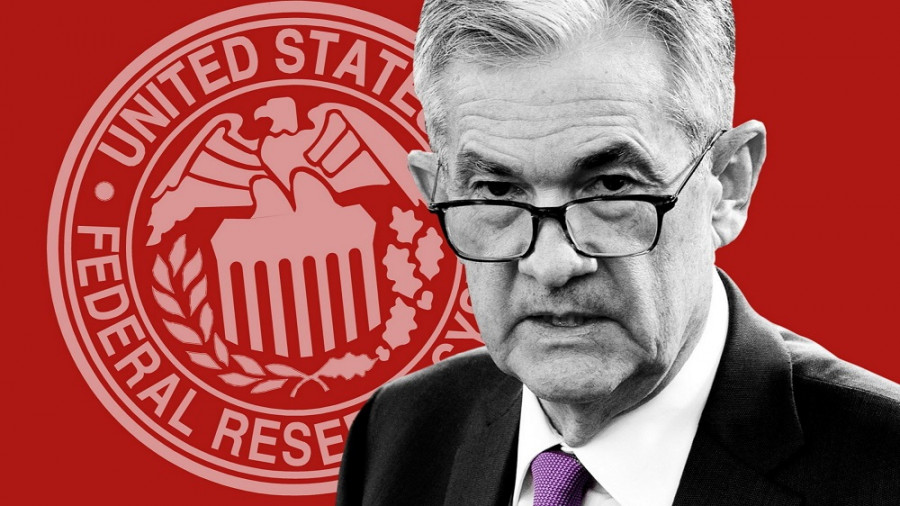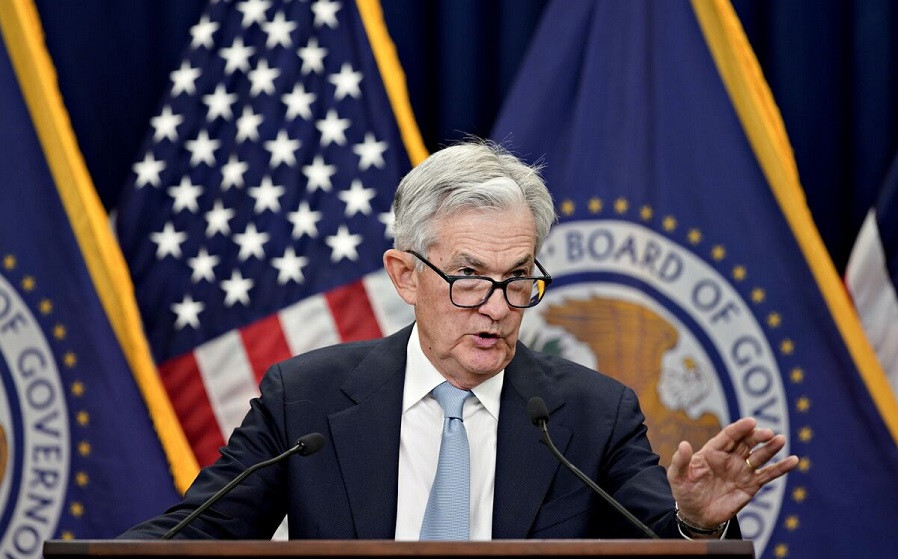The EUR/USD pair has been trying to storm the ninth figure for the second day in a row, taking advantage of the dollar's weakness. The outcome of the Federal Reserve meeting was not in favor of the greenback, though the central bank implemented the base case scenario by raising the rate by 25 points. Until the last minute, the market was not entirely confident that the central bank would maintain its hawkish rate. Speculation ranged from the central bank maintaining the status quo to a rate cut. But the Fed implemented the most expected, conventionally hawkish, scenario.

Such a result should hypothetically support the U.S. currency. But as you know, "the devil is in the details". The tone of the accompanying statement was not in favor of the dollar, and so the greenback fell throughout the market.
Results of the March FOMC meeting
The US currency fell for one reason: the rate hike in March is the penultimate one in the current cycle of monetary tightening. Weare almost sure of it, considering the Fed's rhetoric and the updated median forecast. Although, a few weeks ago, Fed Chairman Jerome Powell said that the top bar of the current cycle will have to be raised even higher, and perhaps it will be necessary to rise at a faster pace. In particular, the head of the Federal Reserve Bank of New York, John Williams, said that the final rate should not be lower than 5.5%. There were also bolder assumptions in the market - 5.75% and even 6.0%.
But after the collapse of the Silicon Valley Bank and Signature Bank, the Fed considerably softened its rhetoric. The central bank did not say that it would accelerate the pace of rate hikes (even in a hypothetical way), while the median forecast for rates at the end of 2023 remained unchanged. "Spot" forecasts suggest another 25 basis point rate hike this year (probably in May) and a 75 basis point rate cut in 2024.
The tone of the accompanying statement's rhetoric has also been softened. In particular, the Fed indicated that it would "take into account the cumulative volume of monetary tightening and the lagged effects of monetary policy, as well as inflation, economic and financial development" in determining the future path of monetary policy.
In the run-up to the March meeting, there were rumors that the central bank could signal the end of the current rate hike cycle. The information backdrop was inflated accordingly, so it is not surprising that traders reacted to the rhetoric of the accompanying statement with bullish movement.
Powell's comments
Commenting on the results of the March meeting, Powell admitted that before the problems in the banking sector, the central bank had not ruled out a larger interest rate hike relative to the December forecast. But adjustments were made due to recent events. Powell's position significantly softened - in fact, he even allowed the implementation of a dovish scenario in the framework of 2023. If earlier, Powell had denied such rumors, then on Wednesday, he said that rate cuts are not currently in the central bank's "baseline scenario" at this time. He said the Fed would continue to assess the impact of financial sector stress on the economy "and is prepared to adjust its monetary policy if necessary".

In other words, the Fed has one more rate hike in reserve, according to the median forecast. There is no predetermined trajectory: the relevant decisions (about a pause or increase) will be made from meeting to meeting.
Conclusions
Obviously, the banking crisis has not gone unnoticed. The Fed significantly softened its rhetoric, removing from the accompanying statement the phrase about the advisability of further rate hikes. Now the central bank only mentions that "some further tightening of monetary policy parameters" may be necessary in future. At the same time, the median rate forecast remained unchanged: it is assumed that the final level of the current cycle will correspond to 5.25%. Powell also directly pointed to the risks posed by bank failures in the United States. As previously mentioned, Powell said that rate cuts are not currently in the central bank's "baseline scenario" at this time.
It is noteworthy that amid such dovish rhetoric from the Fed, the European Central Bank looks really hawkish - especially on the issue of a possible rate cut this year (the ECB rules out this scenario). For instance, ECB President Christine Lagarde made it clear in her speech at the European Parliament that the central bank is not giving up on further inflation measures, even in spite of the "side effects''. Then another ECB representative - Klaas Knot - actually announced another rate hike in May, though he did not specify the size . He emphasized the fact that the core inflation in the eurozone still shows no signs of getting any weaker. By the way, at the end of the latest ECB meeting, Lagarde expressed confidence that inflation in March "will show a considerable slowdown". If this prediction fails to materialize, the euro will start to gain momentum again, amid heightened hawkish expectations regarding further actions by the ECB.
In terms of technique, the pair is located between the middle and upper lines of the Bollinger Bands indicator on the daily chart, as well as above all lines of the Ichimoku indicator (including the Kumo cloud), which formed a bullish "Parade of Lines" signal. This indicates that you should go for long positions. The nearest (and so far the main) target for the bullish movement is 1.0950, which corresponds to the upper line of the Bollinger Bands on the one-week chart.
The material has been provided by InstaForex Company - www.instaforex.comfrom Forex analysis review https://ift.tt/Vp6t73I
via IFTTT
